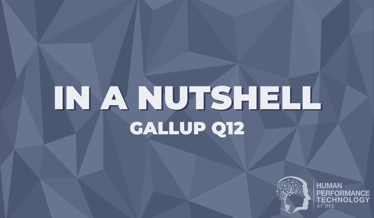Are you Smarter Than a Toddler?
As children, we had a natural sense of curiosity. Ever tried to explain something to a toddler with a barrage of Why? Why? Why?... This natural curiosity stems from a child seeking to rationalise and make sense of the world around them. As adults, we seem to drift away from this notion and start to question less. We start to find answers in our pre-existing beliefs and experiences.
For example, in this HBR article, the authors cite a poll of their customers, finding that respondents estimated that around 70-80% of their children’s dialogue consisted of questions, while among adults, their estimates were around 15-25%. When was the last time one of your colleagues at work questioned something with the toddlers' 15 Why’s approach?
Questioning is so essential to enhance understanding, build empathy, grow knowledge, create connection/intimacy, improve critical thinking, create innovation and open ourselves up to other perspectives/ideas. Like most things, asking great questions is about practice and refinement.
Sometimes, getting back to basics is one of the most powerful things we can do. In this blog post, we will explore how you can bring out your inner toddler with a few basic questioning concepts. In the next post, we will discuss some useful questioning models from three different disciplines.
Two Types of Questions
When we strip things back to the very basics, there are really two main types of questions. These are Open Questions and Closed Questions. Each of these has a place and can be used to reach an outcome. The key is to use each type appropriately.
1. Open Questions
Open Questions require a response beyond ‘yes’ or ‘no’ or another single-word response. Typically open questions will start with who, what, when, where, why and how. We use these questions to open up the other person and help them articulate their thinking on a topic. They can be used to collect information, clarify thinking and explore a problem.
2. Closed Questions
Closed Questions usually result in a ‘yes’, ‘no’ or single-word answer. They typically begin with do, could, would, should, are, will or is. We tend to use closed questions to clarify facts, verify the information and gain commitment.
Purpose of Questions
The purpose of the question will tend to dictate the type of question that will be most effective. Typically, there are three purposes to a question; to identify something, to clarify something and to confirm something.
Identifying Questions
These questions are designed to identify what goals, level of understanding, possible resistors, options and possibilities there might be in a situation. They are typically Open questions, as the goal of them is to understand someone else's perspective on a topic. An example might be, “Can you tell me what your ideal outcome might be from this conversation?”
Clarifying Questions
These questions are designed to confirm a fact or statement made about a given topic or situation. They are typically both Open and Closed questions since they seek to ensure we understand a person's perspective. An example might be, “So, it is important to you to work toward being a branch manager?” or “What actions have you taken so far to develop your skills so you can become a branch manager?”
Confirmation Questions
These questions are designed to confirm what we have understood about a situation or topic. They are typically Closed questions as they are seeking to verify understanding. An example might be, “So, the thing you are most passionate about developing is your sales ability?”
Tips for Asking Better Questions
- Have a plan - start with a structure and a clear goal. That way, if you get off topic, it is easy to guide it back on course.
- Keep questions short and sharp - long meandering questions are hard to answer. Break long questions into a series of questions to maintain focus and remove ambiguity.
- Listen closely and adjust accordingly - the answers you get might require you to adjust your approach.
- Have courage but be appropriate - sometimes you have to ask difficult questions. Make sure the environment is suitable and safe for people to share the answers and give them an out, if needed.
- Don't be afraid of silence - you do not have to fill empty space with words. Some people need time to consider their answers before they give them. Don't cut people off because you’re uncomfortable with silence.
- Adjust to your audience - some people like to think and then give an answer, while others think as they speak. Be flexible in your approach to create the environment for the other person to be at their best.
- Use frameworks and models to help - there are many questioning models and frameworks out there. They can be really helpful in guiding questions and conversations to a desired outcome. In our next blog post, we will explore some useful questioning models from three different disciplines. (Click here to view).
References
- Chan, G 2021, Why Asking Questions Is Good For Your Brand And Your Career, Forbes, accessed 20 March 2023, <https://www.forbes.com/sites/goldiechan/2021/02/01/why-asking-questions-is-good-for-your-brand-and-your-career/?sh=1e2e57661c23>
- Perry, E 2023, Learn how to ask good questions to keep the conversation going, Betterup, accessed 17 March 2023, https://www.betterup.com/blog/how-to-ask-good-questions>
- Pohlmann, T and Thomas, N 2015, Relearning the Art of Asking Questions, Harvard Business Review, accessed 17 March 2023, <https://hbr.org/2015/03/relearning-the-art-of-asking-questions>
- Soken-Huberty, E n.d., 10 Reasons Why Questioning Is Important, EVALCAREERS, accessed 17 March 2023, https://theimportantsite.com/10-reasons-why-questioning-is-important/>

Trevor O'Sullivan
General Manager. Since the early 2000s, Trevor has worked with thousands of Talent Management professionals to develop and apply assessment-based talent management solutions for selecting, developing and managing people. Trevor is an active member of the TTI Success Insights (TTISI) Global Advisory Council, contributes to TTISI product development and is a regular presenter at TTISI-R3. He is honoured to have received multiple Blue Diamond Awards and, more recently, the Bill Brooks Impact Award recognising his contributions to the TTISI global network.



We Would Like to Hear From You (0 Comments)